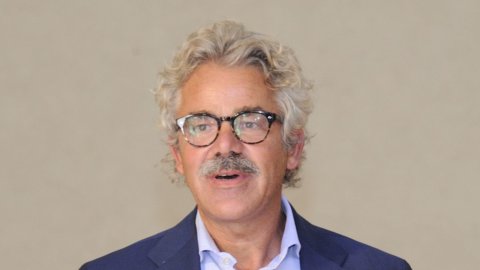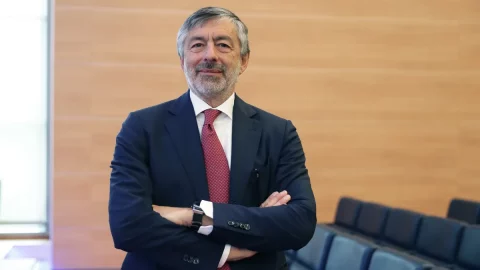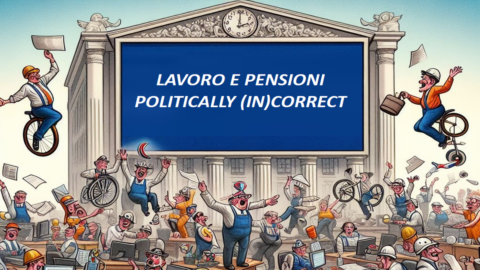The time has come to rethink the development model of our historical centres. The economic crisis, caused by the emergency to curb the spread of covid19, has hit art cities particularly hard, such as Florence, more exposed to the lack of tourist flows. The Tuscan capital which in 2019 had recorded 15,5 million visitors, according to estimates by the Research Office of the Chamber of Commerce this year risks stopping at 5 million, with a dramatic drop of 67%, despite a partial return of travelers since the end of July. The appeal is missing Americans, Japanese and Asians in general, that is, a decisive slice of tourists especially in terms of spending.
For the sake of clarity, I want to remind you that the economy of the Florentine metropolitan city (whose borders coincide with those of the old province) depends on tourism for only 10%, while more than 20% of the area's 32 billion GDP comes from manufacturing and about 70% from the tertiary sector. Basically, the industrial and artisan tradition is still very strong, thanks to sectors such as mechanics, pharmaceuticals, food and fashion, capable of generating 16 billion in exports last year. But, in large part, these are production chains scattered throughout the territory, while the economy of the historic center is strongly (if not almost exclusively) polarized towards hospitality. If therefore at the metropolitan level the decline in GDP at the end of 2020 will be around 11%, with the prospect of being able to recover pre-covid levels within a couple of years (+5% the expectation for 2021), for the activities in the historic center of Florence the damage will be much higher and it does not matter if, health permitting, recovery will be able to arrive relatively quickly, thanks also to the action of local institutions which, in line with national and European provisions, are moving with a harmony and coordination capacity that is anything but obvious.
The Dolce&Gabbana fashion house focused on the theme of "rebirth" and the Renaissance for its recent fashion event in Florence, the first in presence after the stop due to the pandemic, held in early September with the contribution of the municipal administration, the CR Firenze Foundation and of the Chamber of Commerce, as well as Pitti Immagine and the Tuscany Region. This from Dolce&Gabbana, which in the Florentine area, in Incisa Valdarno, has a company with 400 employees, was an important sign of a restart, with the involvement of 38 local artisan businesses, testifying to the strength and importance of local manufacturing. Florence must focus on made in Italy which here becomes made in Tuscany: an ability to do, based on the combination of tradition and innovation as a guarantee of success.
I am convinced that the economic model for the historical center of Florence must look in this direction, trying to bring back residents to a city which has gradually depopulated in recent decades, favoring the return of artisan activities now alienated by excessively high rents and circulation difficulties for means of transport, bearing in mind the fundamental role that training and the innovation system have in the pass on the "know-how" to the new generations. Schools, therefore, research and workshops where things of excellence are made, from leather goods to food, inspired by the criteria of sustainability and enabling all entrepreneurs, even the smallest ones, to make the best use of new technologies and online sales systems .
The creation of a modern infrastructure system will be crucial in achieving these objectives. The money arriving from Europe with the Recovery Fund, and the other funds put in place by the State and the Region, as well as the legislative instruments launched these days, will have to be used to make the city totally sustainable and functional, completing or finally getting off the ground the projects already in the pipeline (from the tramway lines to the airport, from the high-speed railway station to the third lanes of the motorway, to a network of parking lots which makes it possible to free the streets and squares from cars and mopeds), moving from digital coverage (with broadband and ultra-broadband) of the entire territory to enable our companies to plan the future and compete internationally.
The digitization of businesses is a topic that is particularly close to my heart and on which the Chamber of Commerce of Florence, through its PID (Digital Enterprise Point), works with commitment and passion. An economic model therefore that revolves around the quality of its "made in", the knowledge and ability of "know-how", all factors capable not only of growing production chains and generating leadership, but also of attracting qualified visitors. Florence needs to rediscover a more aware tourism and less homogenized, in keeping with the manufacturing tradition of the area. The crisis triggered by the pandemic is an opportunity to try to reverse a course hitherto too often dictated by the major trends in international travel, a source of income that we have seen can dry up overnight.
°°°°The author is the President of the Chamber of Commerce of Florence and national vice president of Unioncamere





